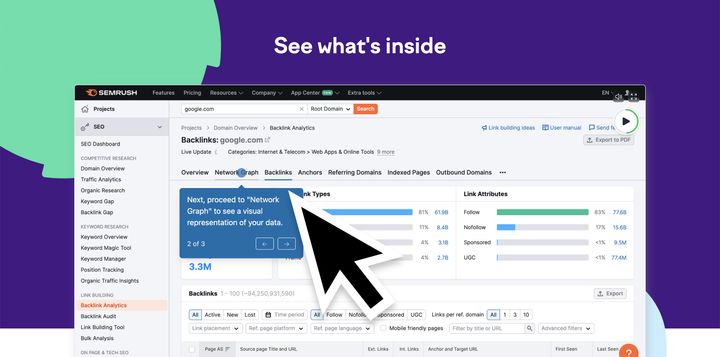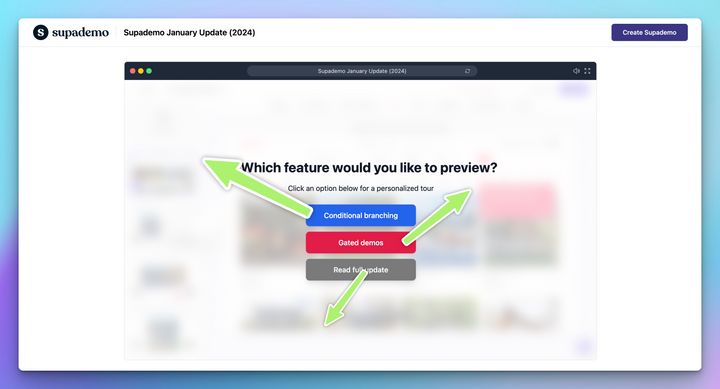Sales qualification is a crucial process in turning potential buyers into serious prospects. It involves determining whether a lead or prospect is a good fit for your product or service. By assessing their interest, business challenges, and compatibility with your offering, you can streamline the sales process and focus on leads that are most likely to convert.
In this ultimate guide, we will delve into the importance of sales qualification, the stages involved, the lead qualification process, qualifying questions, qualified prospects, levels of prospect qualification, and when to disqualify prospects. We will also explore various lead qualification frameworks such as BANT, MEDDIC, CHAMP, GPCTBA/C&I, and FAINT that can help you effectively qualify leads. Let's dive in!
The Importance of Sales Qualification
Sales qualification is crucial for sales organizations as it significantly improves close ratios. Without proper qualification, you risk pursuing leads who are not a good fit for your product due to incompatible budgetary constraints or organizational challenges. By qualifying leads, you can:
- Move on when the lead isn't qualified, saving time and resources.
- Focus on a smaller, specific segment of buyers, delivering a personalized selling experience.
- Understand the buyer's challenges and deliver a better solution.
- Ensure that your activities lead to a positive impact on revenue.
- Create customized sales qualification processes for different verticals.
- Build trust and deliver tailored solutions, leading to higher customer satisfaction.
The Sales Qualification Process
The sales qualification process consists of several stages that help you determine the suitability of a lead or prospect. Let's walk through each stage in detail:
Stage 1: Create an Ideal Customer Profile (ICP)
The first stage of sales qualification is creating an ideal customer profile (ICP). This involves identifying the type of customers best suited to your product or solution. For example, if you sell a SaaS software tool for warehouse and inventory management, your ideal market might consist of brands with high inventory volumes and diverse supply chains.
Creating an ICP involves collaboration between sales, marketing, and product development teams. It helps streamline the qualification process and ensures that effort is focused on leads most likely to convert.
Stage 2: Identify Key Criteria
In this stage, you need to identify the key criteria that qualify a lead before they enter the qualification pipeline. This helps eliminate leads that are less likely to convert from interest to investment. Common qualification criteria include business budget, buying authority, urgency to deploy a new solution, and fit with existing company frameworks.
Creating a checklist for these criteria ensures consistent evaluation of sales potential across your team.
Stage 3: Put Technology in Place
Successful sales qualification requires substantial data. Implementing customer relationship management (CRM) solutions can help capture and organize sales and research data, prospect activity, and customer information. CRM software provides a single source of truth for sales and marketing teams, enabling more effective sales strategies.
Stage 4: Do Your Homework
Thorough research is crucial in sales qualification. The more you know about your leads, the better you can build reciprocal relationships with them. Research your prospects' roles, company information, and any relevant industry news or reports. This will help you gain context and tailor your approach during the qualification process.
Stage 5: Make Contact
The final stage is reaching out to your leads. With lead data in hand, connect via phone, email, or social media sites to set up a qualifying call. The purpose of this call is not to make an immediate sale, but to gather information about pain points, budgets, needs, and the decision-making process.
Focus on building relationships and understanding your customers' requirements. Even if the current lead doesn't convert, they may provide valuable insights or refer you to the right decision-makers.
The Lead Qualification Process
The lead qualification process begins with a pool of leads generated by marketing, sales, acquisition, and product teams. Different types of leads include:
- Unqualified leads: Leads that have not been nurtured enough to be forwarded to the sales team.
- Marketing qualified leads (MQLs): Leads fit to receive marketing communications such as email campaigns and content offers.
- Sales qualified leads (SQLs): Leads ready to connect with a sales rep and begin the sales process.
- Product qualified leads (PQLs): Leads that have shown a strong interest in the product through freemium subscriptions or free trials.
- Conversion qualified leads (CQLs): Leads that have converted on your website through form submissions or click-to-call buttons.
Leads are then fed into a lead qualification framework, where a series of qualifying questions help determine whether they are a good or poor fit for your product. Qualified leads are entered into the sales process, while disqualified leads are nurtured for potential future purchases.
Qualifying Questions
Qualifying questions help salespeople determine a prospect's fit for specific criteria such as need, budget, authority, urgency, or other factors. Open-ended questions are typically more effective in eliciting honest and revealing responses. Here are some examples of strong qualifying questions:
- What business challenge can this product help you solve?
- What has prevented you from solving the problem until now?
- What does your budget look like for this project?
- Are you using any solutions to solve this problem? If so, why are you switching?
- What is your principal priority in terms of solving this problem? Which functionality would be most important?
- What does success look like for your company after using this product?
- Who in your team would use this product on a daily basis?
- What are some points of friction in your day-to-day that you feel this product can help you streamline?
- Which decision-makers would be involved in the purchase of this product?
- Would it be alright if I followed up on mm/dd/yyyy?
The answers to these questions help qualify or disqualify prospects based on their fit with your product or service.
Qualified Prospects
A qualified prospect has gone through the lead qualification process and is deemed ready to be entered into the sales pipeline. A qualified prospect typically possesses the following attributes:
- Clear Pain Points: A qualified prospect can clearly articulate specific pain points that your product or service can address. They are acutely aware of their own challenges and are actively seeking a solution.
- Budget: A qualified prospect has a budget or a willingness to allocate funds for your solution. They understand the value your product provides and are willing to invest in it.
- Purchase Power: A qualified prospect has the authority to make or influence the purchasing decision. They can either sign off on the purchase themselves or sway other stakeholders to do so.
- Deadline or Strict Timeline: A qualified prospect has an urgent need to find and purchase a solution within a specific timeframe. They have a clear timeline for when they need to solve their problem.
- Mutual Benefit: A qualified prospect understands that your solution can help them achieve their goals and is interested in building a mutually beneficial relationship.
By identifying qualified prospects, you can focus your resources on leads with a higher likelihood of converting into customers.
Levels of Prospect Qualification
Sales reps must qualify prospects at three different levels: organization-level, opportunity-level, and stakeholder-level qualification.
Organization-Level Prospect Qualification
Organization-level qualification involves determining whether a prospect aligns with your company's ideal buyer persona. Factors to consider include location, industry, company size, and alignment with your target market.
Opportunity-Level Prospect Qualification
Opportunity-level qualification focuses on whether a prospect has a specific need that your product or service can fulfill. It also assesses the feasibility of implementing your solution within their organization. Understanding the prospect's challenges and their readiness for change is crucial at this stage.
Stakeholder-Level Prospect Qualification
Stakeholder-level qualification determines whether your initial contact has the authority or influence to make purchasing decisions. Identifying the decision-making process and involving key stakeholders early on is essential for successful qualification.
Disqualifying prospects at any of these levels is important to ensure you focus on leads that align with your product and have a higher likelihood of conversion.
When to Disqualify Prospects
Disqualifying prospects is not a negative outcome; it allows you to prioritize and allocate your resources effectively. Disqualification should occur when a prospect does not meet the criteria for qualification at any of the three levels. Here are some situations where disqualification may be necessary:
- Lack of alignment with buyer personas.
- Inability to articulate clear pain points.
- Insufficient budget or unwillingness to invest in your solution.
- Lack of decision-making authority or influence.
- No urgent need or timeline for implementing a solution.
- Inability to demonstrate mutual benefit or trust in your offering.
Disqualifying prospects that do not meet your qualification criteria helps maintain a focused sales pipeline and improves overall efficiency.
Lead Qualification Frameworks
Lead qualification frameworks provide a structured approach to qualifying leads. Here are some widely used frameworks:
BANT Qualification Framework
The BANT framework, developed by IBM, focuses on four key factors: Budget, Authority, Need, and Timeline. It helps determine whether a prospect has the financial resources, decision-making authority, specific need, and urgency to make a purchase. BANT questions include:
- Do you have a budget set aside for this purchase?
- Whose budget does this purchase come out of?
- What business challenge can this product help you solve?
- When do you need to solve this problem?
MEDDIC Qualification Framework
MEDDIC stands for Metrics, Economic Buyer, Decision Criteria, Decision Process, Identify Pain, and Champion. It is particularly useful for complex sales processes and high-value deals. MEDDIC focuses on understanding the prospect's goals, decision-making process, pain points, and the presence of a champion within the organization.
CHAMP Sales Qualification Framework
CHAMP stands for Challenges, Authority, Money, and Prioritization. It emphasizes assessing the prospect's challenges, decision-making authority, budget, and the priority of their needs. CHAMP helps determine whether a prospect has a genuine need and the ability to allocate resources to address it.
GPCTBA/C&I Qualification Framework
GPCTBA/C&I stands for Goals, Plans, Challenges, Timeline, Budget, Authority/Negative Consequences, and Positive Implications. It focuses on understanding the prospect's goals, plans to achieve them, challenges they face, timelines for implementation, budget availability, decision-making authority, and the potential consequences and implications of addressing their challenges.
FAINT Qualification Framework
FAINT stands for Funds, Authority, Interest, Need, and Timing. It is similar to BANT but places interest as a priority before need. FAINT helps determine whether a prospect has the financial resources, decision-making authority, genuine interest, specific need, and urgency to make a purchase.
Choosing the right qualification framework depends on your sales process, the complexity of your product or service, and the nature of your target market.
Conclusion
Sales qualification is a vital process that helps streamline the sales process and focus on leads that are most likely to convert. By creating an ideal customer profile, identifying key criteria, leveraging technology, conducting thorough research, and making meaningful contact, you can effectively qualify leads and increase your chances of closing deals.
The lead qualification process involves categorizing leads, asking qualifying questions, and determining whether a prospect is a good fit for your product. Understanding the levels of prospect qualification and when to disqualify prospects ensures a focused and efficient sales pipeline.
Various lead qualification frameworks such as BANT, MEDDIC, CHAMP, GPCTBA/C&I, and FAINT provide structured approaches to qualifying leads based on factors like budget, authority, need, timeline, and more.
By implementing these strategies and frameworks, you can find and keep qualified sales leads, maximize your sales efforts, and drive revenue growth. So, start qualifying and selling smarter today!




